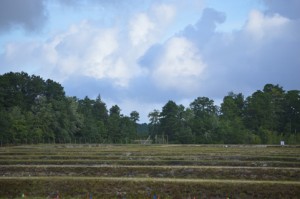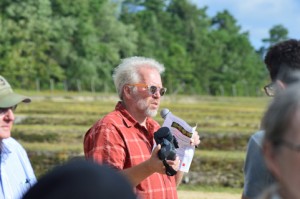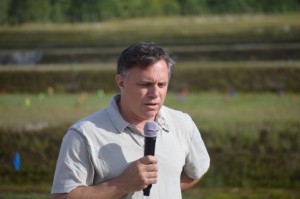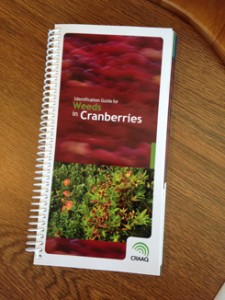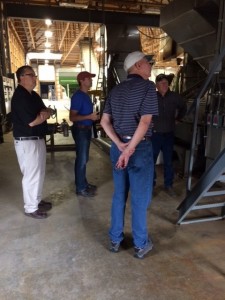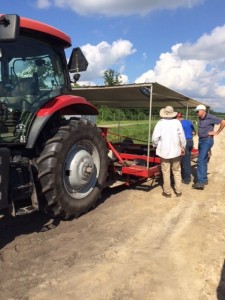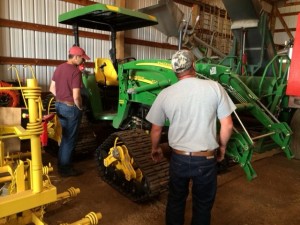Yesterday several Pine Island Cranberry team members once again attended the annual American Cranberry Growers Association (ACGA) summer field day at the Rutgers extension center. While several topics are similar to those discussed at the winter meeting, the field day is a chance to go out and explore the researchers’ valuable work first hand.
All in attendance found the demonstrations highly useful! Some took particular notice of Dr. Peter Oudemans’ talk on his work on the heat stress factor in disease management. “Peter’s talk on understanding the factors that lead to heat damage was a hot topic for us…no pun intended,” says PIICM manager Cristina Tassone. “This year we have been trying to monitor the weather with our thermometer–both automated and analog–our new weather stations, our new thermal camera, and we started testing internal heat this season with meat thermometers. We have been going back and forth with Peter trying to find the best threshold for when we should turn on the sprinklers, and his talk yesterday provided the analysis of the data he collected along with a threshold that will help us make better decisions.” GM Fred Torres agrees: “You never have all the answers; there are always what-ifs, but we’re feeling better about what to do and what to try. Peter’s work is really narrowing it down, and it’s getting better and easier.”
The other speakers were also quite well-received. “It’s always good to hear about the new varieties, what they’re coming up with,” Fred says. Cristina was very interested in Dr. Jim Polashock’s talk on virus symptoms and detection. “It helped me make a connection with what we are seeing in the bogs,” she says. “We have seen scarring on the fruit in the past, and weren’t always sure what to attribute it to. Seeing the fruit samples with the viruses yesterday will help us identify what we are seeing in the bogs better. I am also anxious to see what they find out about the ‘footprint’ disease in the near future.”
Yesterday the ACGA also distributed the “Identification Guide for Weeds in Cranberries”. Hilary Sandler, weed specialist at UMass, had Quebec’s cranberry weed identification guide translated to English for growers on the east coast. This weed guide is of very high quality: 200+ pages with color photos of each weed’s stages of growth, in addition to a lot of information on the weeds. In addition to translating this guide, Hilary added new weeds and information to be sure that it covers all the weeds present in Massachusetts, New Jersey, and the other east coast Canadian growing areas. “I was very excited to receive this,” Cristina says. “I know it will be very helpful when we create our 2016 Weed Control Plan.”
As always, Dr. Cesar Rodriguez-Saona and his team did a spectacular job planning the program; it was well-organized, informative, and somehow or other, he found a way to control the weather! Many thanks to Cesar, Peter, Jim, and all of the fantastic scientists at the Marucci Center, whose work with all of us makes the NJ cranberry industry increasingly better, year after year.

